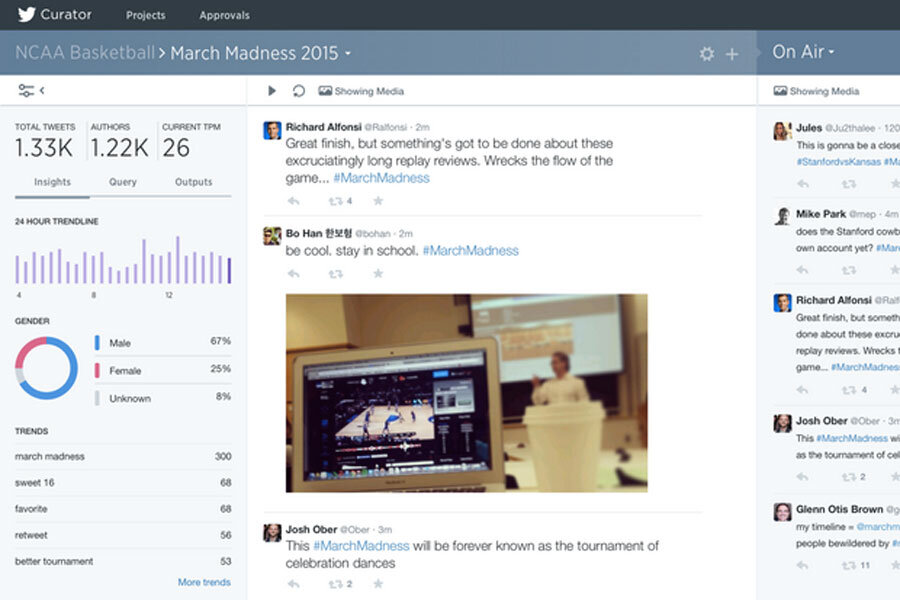Twitter's Curator aims to identify news as it breaks
Loading...
Social media giants seems to have a thing for news outlets lately.
On Tuesday, Twitter publicly launched Curator, a filtering service that aims to help media outlets identify and display tweets and Vine videos alongside live broadcasts.
Earlier this year at the News:Rewired Conference in London, Twitter announced its plans to help the media monitor and discover breaking news with Curator. It works by allowing publishers or broadcasters to create different queries with a variety of filters to track a specific story. The system can even pick up on breaking news before users may notice.
For example, a TV network could display live-tweets alongside a presidential debate or a sports publication could follow specific aspects of a hashtag during a game.
Curator was designed to help with the overwhelming “firehose” stream of data that Twitter can create. Instead of journalists having to read through all of Twitter’s posts, the tool allows for filtration by keywords, authors (@handles), location, language, time zone, follower count, verified users, number of likes or retweets, and a whole lot more.
This allows for the tracking of very specific trends, such as, say, following all men in Kuwait who are tweeting about the latest episode of American Idol.
The free service has been in a beta-testing phase with a dozen or so organizations – including the New York City Mayor’s office and the major Italian news network Mediaset – since its initial introduction, but now the tool will be made widely available to media organizations.
The move comes as Twitter looks for new ways to put its product out to a larger audience. As TechCrunch reports, there are no plans to include premium fees or advertising in the feature, Curator is just supposed to be a way for Twitter to get its name out there.
Twitter has been pushing to make a bigger presence in the world for the past few months now. The company recently made a deal with Google to display tweets in search results, so its latest move looks to bring Twitter directly to wherever you get your news. Prepare to see a lot more 144-character commentary in the future.






